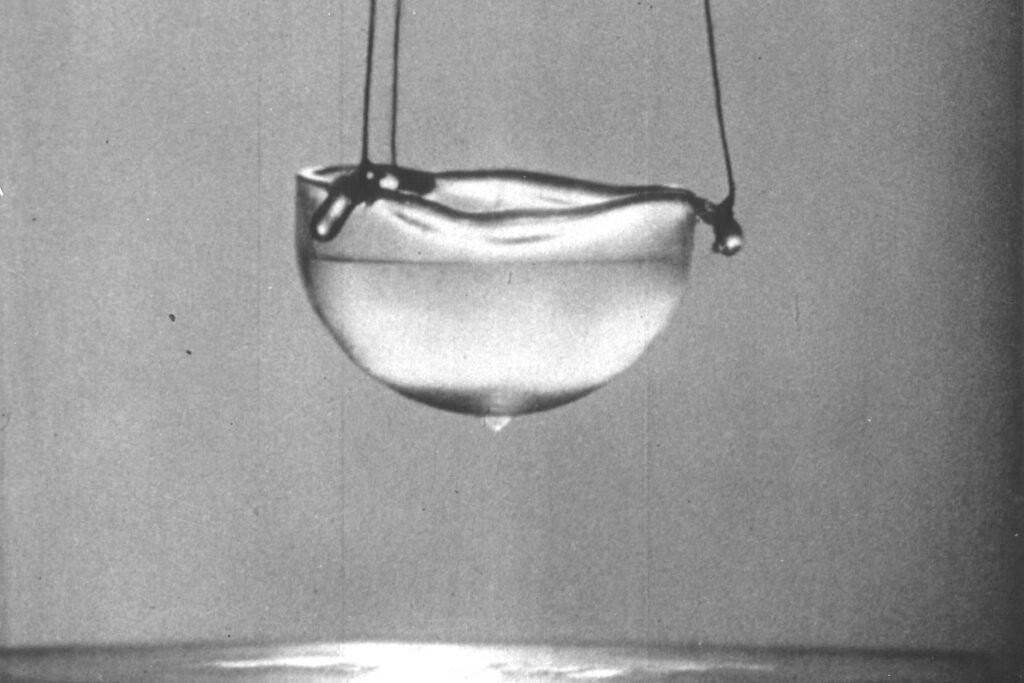Scientists observed supersolid and superliquid properties in a quantum gas. Discovering a new state of matter.
Source: SciTechDaily
Matter that behaves like both a solid and a superfluid at the same time might sound impossible. But more than 50 years ago, physicists predicted that quantum mechanics could allow such a state. In this unique state, collections of particles exhibit properties that seem contradictory. Francesca Ferlaino from the Department of Experimental Physics at the University of Innsbruck and the Institute of Quantum Optics and Quantum Information (IQOQI) at the Austrian Academy of Sciences explains, “It is a bit like Schrödinger’s cat, which is both alive and dead, a supersolid is both rigid and liquid.”
While scientists have managed to directly observe the crystalline structure that gives supersolids their “solid” qualities, their superfluid properties have been more elusive. Researchers have studied various aspects of superfluid behavior, like phase coherence and gapless Goldstone modes, but they had not found direct evidence of one key feature of superfluidity: quantized vortices.
What’s a superfluid? It’s a fluid in temperatures close to absolute zero, which has zero viscosity, by that, don’t have friction, analog to superconductors, which don’t have electric resistance. The superfluid also has a very high thermal conductivity. Well known examples are the isotopes helium-3 and helium-4 cooled at 2 K (-271.15ºC). While a supersolid is a solid with superfluid properties.

In a major breakthrough, quantized vortices have now been observed in a rotating two-dimensional supersolid. This finding provides long-awaited proof of superfluid flow within a supersolid and marks a significant advance in the study of modulated quantum matter.

In this new study, scientists combined theoretical models with cutting-edge experiments to create and observe vortices in dipolar supersolids, a feat that proved extraordinarily challenging. The Innsbruck team had previously achieved a breakthrough in 2021 by creating the first long-lived two-dimensional supersolid in an ultracold gas of erbium atoms, which was a difficult task in itself.
Using high-precision techniques guided by theory, the researchers employed magnetic fields to carefully rotate the supersolid. Because liquids do not rotate rigidly, this stirring caused the formation of quantized vortices, which are the hydrodynamic fingerprints of superfluidity.
Moreover, the experiment took nearly a year, revealing significant differences between the dynamics of vortices in supersolids and unmodulated quantum fluids, and offering fresh insight into how the superfluid and solid characteristics coexist and interact in these exotic quantum states.
The implications of this discovery reach far beyond the laboratory, potentially impacting fields ranging from condensed matter physics to astrophysics, where similar quantum phases may exist under extreme conditions.
“Our findings open the door to studying the hydrodynamic properties of exotic quantum systems with multiple broken symmetries, such as quantum crystals and even neutron stars,” said Thomas Bland, who guided the theoretical development of the project. “For instance, it is assumed that the change in rotational speed observed in neutron stars—so-called glitches—are caused by superfluid vortices trapped inside neutron stars. Our platform offers the opportunity to simulate such phenomena right here on Earth.” Superfluid vortices are also believed to exist in superconductors, which can conduct electricity without loss. “


